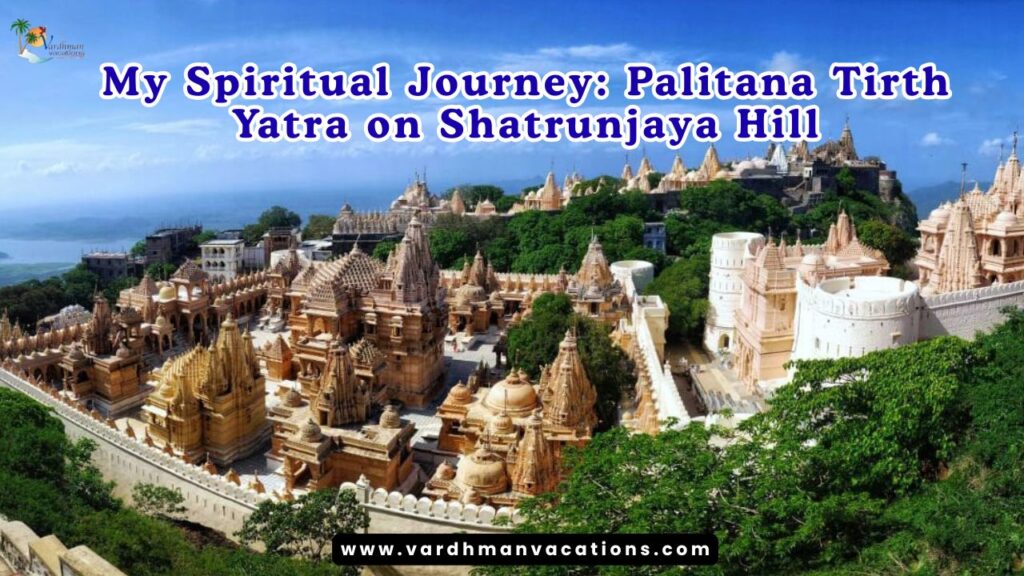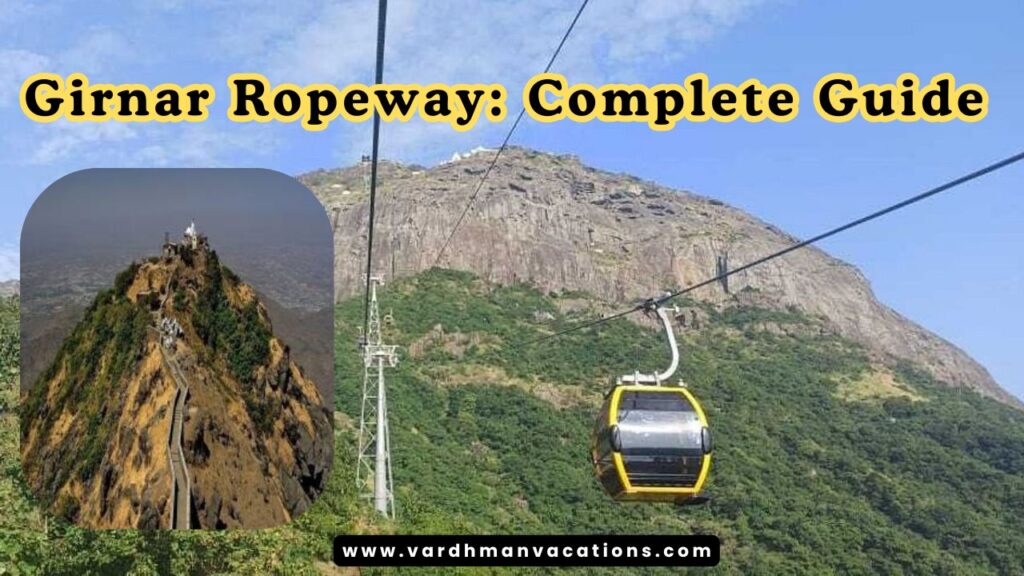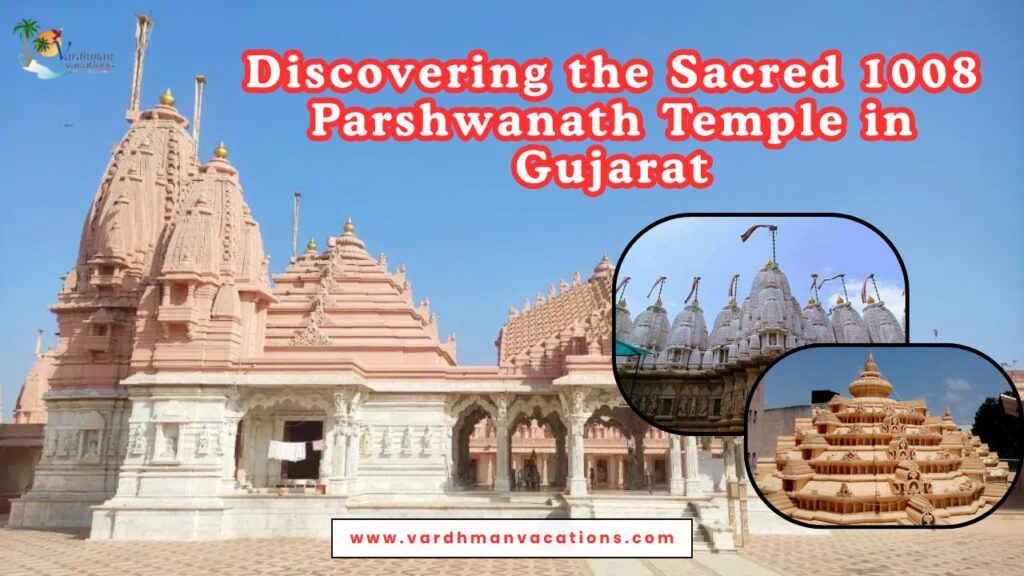In quiet and peaceful places across India, people have always tried to connect with God. Over the years, they built amazing temples—special places where people feel close to something greater than themselves. When you walk into one of these old temples, it can feel like you’ve stepped into another world.
India has a long history and many different cultures, and it is filled with beautiful temples. You can find them on mountain tops and near the sea. These temples show not only deep faith but also incredible design and artwork. What makes them truly special is that people still visit, pray, and find meaning in them even today.
As we explore some of India’s oldest temples, we’ll see how history, art, and religion come together to create something truly magical.
Badrinath Temple – Uttarakhand
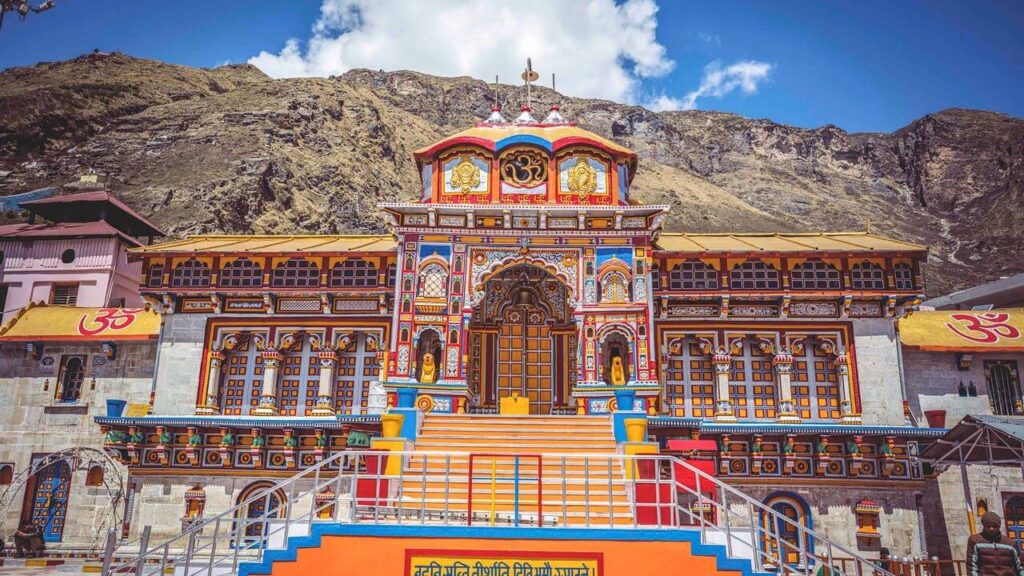
Badrinath Temple is one of the most holy places in India and part of the Char Dham Yatra. It is located more than 10,000 feet high in the Himalayas and is dedicated to Lord Vishnu. The temple is known for its bright and colorful entrance called Singhdwar and its peaceful surroundings.
According to legend, Goddess Lakshmi turned into a Badri tree to protect Lord Vishnu while he was meditating. That’s how the place got its name.
The temple has three main parts:
- Garbha Griha – where the main idol of Lord Badrinath is placed.
- Darshan Mandap – where rituals and prayers are done.
- Sabha Mandap – where pilgrims gather.
Inside, you’ll find not only Lord Vishnu (Badrinarayan) but also idols of Nar, Narayan, Lakshmi, and Adi Shankara.
The main idol is made of black stone and is believed to be self-manifested (not made by humans). Badrinath is also known for the Tapt Kund, a hot water spring believed to have healing powers.
Travel Info
- Location: Chamoli, Garhwal, Uttarakhand
- Nearest Railway Station: Rishikesh (295 km)
- Nearest Airport: Jolly Grant Airport, Dehradun (314 km)
- By Road: Well connected by NH-58 from Rishikesh, Haridwar, and Dehradun
- Best Time to Visit: May to October
- Temple Timings: 4:30 AM – 1:00 PM & 4:00 PM – 9:00 PM (Monday to Sunday)
Konark Sun Temple – Odisha

The Konark Sun Temple, near Puri in Odisha, is one of the most famous ancient temples in India. It is also a UNESCO World Heritage Site. The temple is built like a huge stone chariot for the Sun God, pulled by seven stone horses.
There are three statues of the Sun God in the temple, designed to catch sunlight at different times of the day.
The temple is built in the Kalinga style and is known for its amazing carvings of animals, warriors, and mythical creatures. One special feature is the way the sunlight was once made to shine through a diamond placed at the top, lighting up the main idol in a beautiful way. At the entrance, there are huge stone lions guarding the temple.
The walls of the temple are covered with carvings showing people, animals, and battle scenes. Konark is part of Odisha’s Golden Triangle, along with Jagannath Temple in Puri and the temples in Bhubaneswar.
The best time to visit is from September to March, when the weather is pleasant.
Travel Info
- Location: Konark, Odisha
- Nearest Railway Station: Puri (35 km)
- Nearest Airport: Bhubaneswar (65 km)
- By Road: Well-connected by buses and taxis from Puri and Bhubaneswar
- Best Time to Visit: September to March (to avoid hot and humid weather)
- Temple Timings: 6:00 AM – 8:00 PM (Open every day)
Dwarkadhish Temple – Gujarat
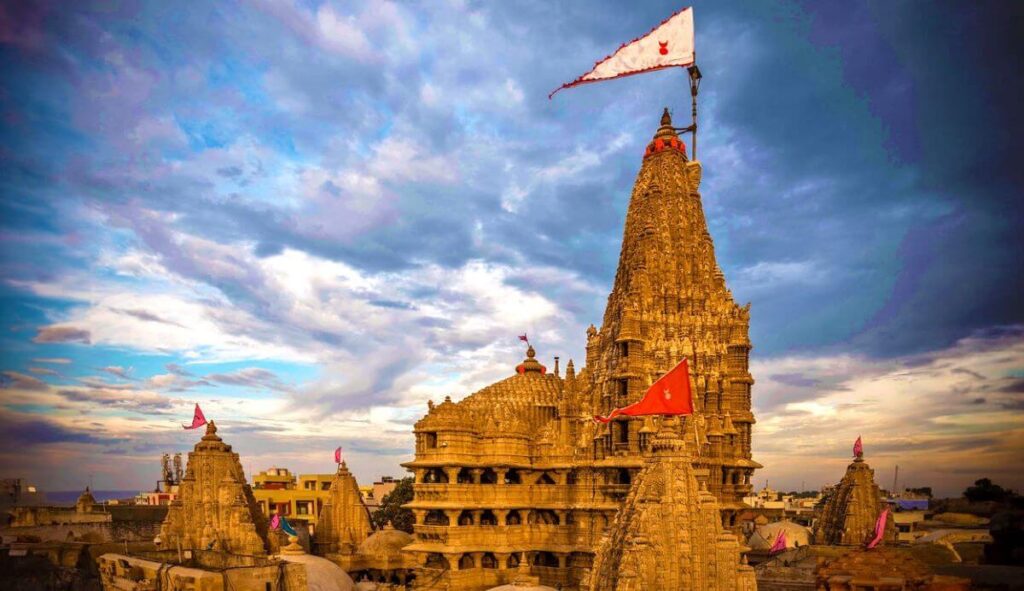
Dwarkadhish Temple, also called Jagat Mandir, is a famous ancient temple located in Dwarka, Gujarat. It is dedicated to Lord Krishna and built in the Chalukya-style architecture. Made from limestone and sand, this five-story temple is a great example of India’s rich temple heritage.
According to history, this 2,500-year-old temple was built by Vajranabha, the great-grandson of Lord Krishna, on land that Krishna is believed to have reclaimed from the sea. The temple stands at the meeting point of the Gomti River and the Arabian Sea, making the view even more beautiful and spiritual.
The temple is 43 meters tall and has detailed carvings of mythical stories. On top is a huge flag, made of 52 yards of cloth, which can be seen from 10 km away. Devotees usually take a holy dip in the Gomti River before entering through the Swarga Dwar (Gate of Heaven) and exiting from the Moksha Dwar (Gate of Salvation).
If you are visiting Dwarka, this temple is a must-see, offering both spiritual peace and a deep connection to history.
Travel Info
- Location: Devbhoomi Dwarka, Gujarat
- Nearest Airports: Porbandar (95 km) and Jamnagar (145 km)
- Nearest Railway Station: Dwarka Railway Station (2 km from the temple)
- By Road: Easily accessible via NH-947, with good bus connections
- Best Time to Visit: November to February (pleasant weather) and during Janmashtami festival
- Temple Timings: 6:30 AM – 1:00 PM & 5:00 PM – 9:30 PM (Open daily)
Kedarnath Temple – Uttarakhand
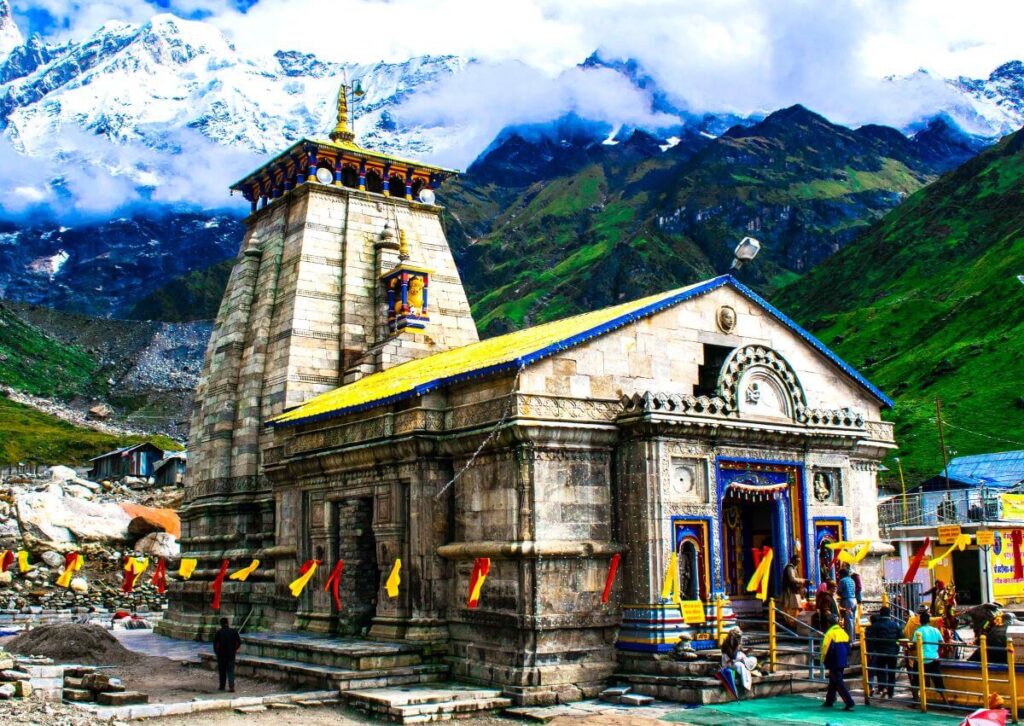
Kedarnath Temple is one of the holiest and oldest temples in India. It is located high in the Garhwal Himalayas of Uttarakhand, at an altitude of 3,580 meters. The temple is surrounded by snowy mountains, thick forests, and the Mandakini River, making it a peaceful and powerful place.
It is an important stop in the Char Dham Yatra and also one of the 12 Jyotirlingas, which are sacred shrines dedicated to Lord Shiva.
Thousands of pilgrims visit every year, especially those looking for a spiritual journey in the Himalayas. The temple is built from huge stone slabs placed on a raised platform and shows the strength of ancient Indian architecture. Even during the 2013 floods, the temple survived, which made it even more sacred and mysterious to many.
Many people believe that visiting Kedarnath helps them get moksha (freedom from the cycle of life and death). With its powerful energy and deep spiritual history, Kedarnath is truly one of India’s most soul-stirring temples.
Travel Info
- Location: Rudraprayag district, Uttarakhand
- Nearest Airport: Dehradun (Jolly Grant Airport – 239 km), with helicopter services from Sirsi, Phata, and Guptkashi
- Nearest Railway Station: Rishikesh (221 km)
- By Road: Buses run to Sitapur; from Sonprayag, jeeps go to Gaurikund
- Best Time to Visit: April to mid-June and October to mid-November
- Temple Timings: 4:00 AM – 9:00 PM (Closed from 3:00 PM to 5:00 PM)
Meenakshi Temple – Madurai, Tamil Nadu
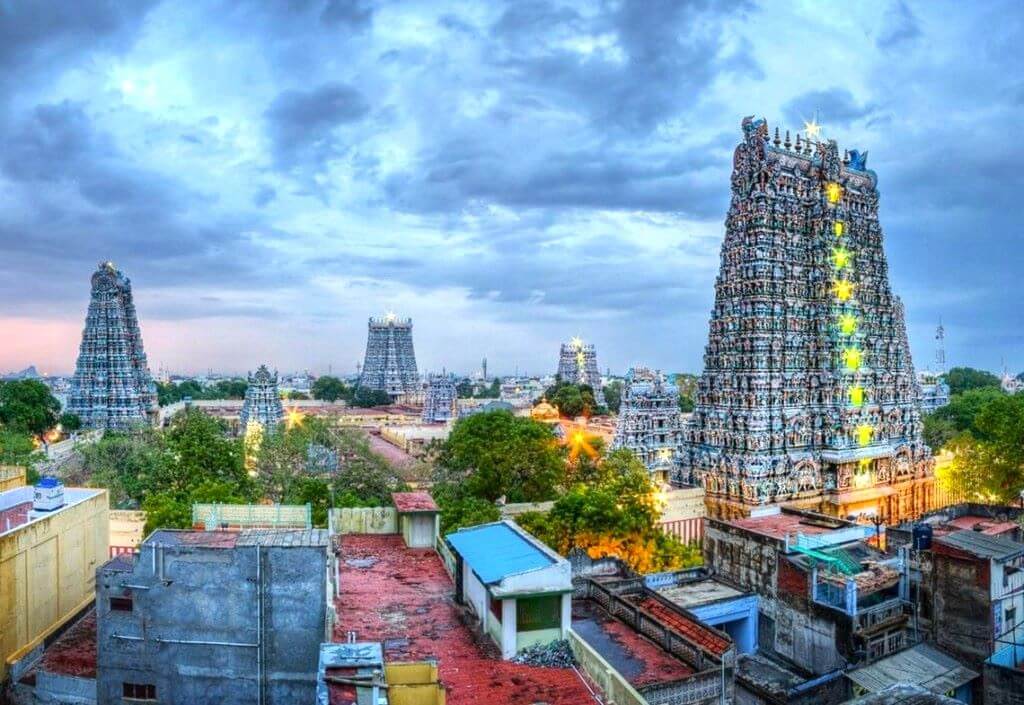
The Meenakshi Amman Temple, located on the southern bank of the Vaigai River in Madurai, Tamil Nadu, is one of the most celebrated and architecturally stunning temples in India. Dedicated to Goddess Meenakshi (a form of Parvati) and Lord Sundareswarar (Shiva), this iconic temple is a centerpiece of Tamil Nadu’s spiritual and cultural heritage.
A must-visit in most South India temple tour packages, the temple complex stands out with its 14 towering gopurams (gateway towers), each covered in colorful, intricate sculptures of gods, goddesses, demons, and celestial beings. The temple’s most captivating features include:
- The Golden Lotus Pond (Potramarai Kulam) – a sacred tank within the temple complex.
- Hall of Thousand Pillars – a marvel of symmetry and stone craftsmanship.
- 33,000+ detailed sculptures – each telling a unique story from Hindu mythology.
- The green idol of Goddess Meenakshi – believed to have a mystical origin and spiritual significance.
Built according to ancient Shilpa Shastra principles, the temple is a living example of Dravidian architecture and undergoes restoration every 12 years to preserve its grandeur.
Travel Info
- Location: Madurai, Tamil Nadu
- Nearest Airport: Madurai International Airport
- Nearest Railway Station: Madurai Junction
- By Road: Madurai is well connected with Chennai, Coimbatore, Trichy, and other major cities in Tamil Nadu.
- Best Time to Visit: October to March, when the weather is cooler and ideal for temple exploration
- Temple Timings: Morning: 5:00 AM – 12:30 PM and Evening: 4:00 PM – 9:30 PM
Kailasa Temple – Maharashtra
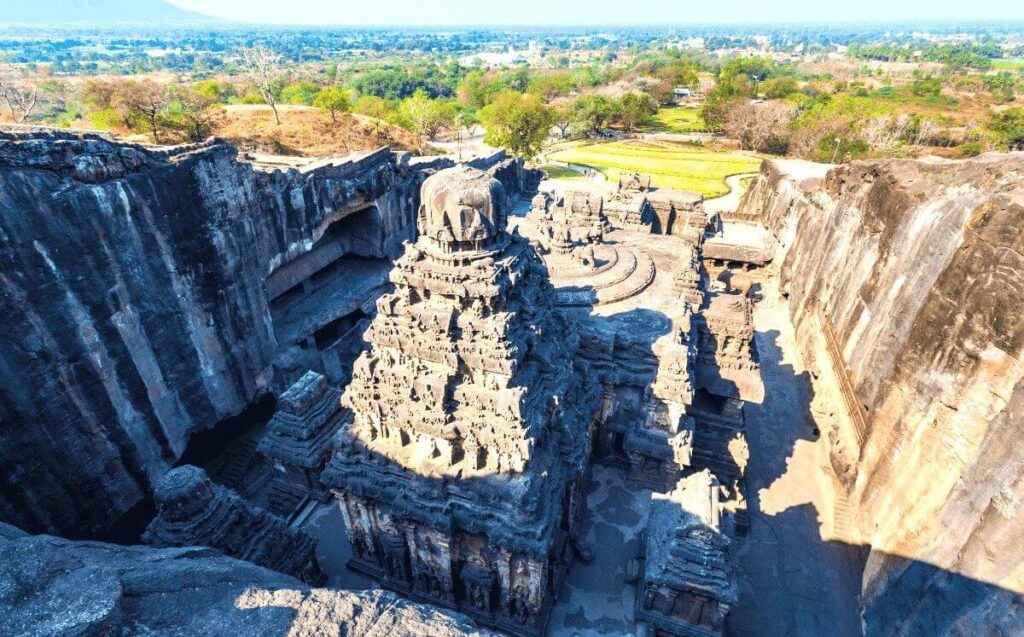
The Kailasa Temple (Cave 16 at Ellora) is one of the most extraordinary ancient temples in India and a shining example of India’s rock-cut architecture. Located in Ellora, Maharashtra, this architectural wonder is part of the UNESCO World Heritage-listed Ellora Caves, and is the largest monolithic rock-cut temple in the world, carved entirely from a single basalt rock in the 8th century.
Dedicated to Lord Shiva, the temple was designed to replicate Mount Kailash, his celestial abode. This temple isn’t just carved – it was excavated top-down, an astonishing feat achieved with basic tools over decades of devotion and craftsmanship.
Travel Info
- Location: Kailasa Temple, Ellora Caves, Verul, near Aurangabad, Maharashtra, India
- Nearest Airport: Aurangabad Airport (approx. 30 km)
- Nearest Railway Station: Aurangabad Railway Station
- By Road: Well-connected to Aurangabad, Pune, and Mumbai via national and state highways
- Best Time to Visit: October to March offers the most pleasant weather, though the site is open year-round
- Temple Timings: 7:00 AM to 6:00 PM (Closed on Tuesdays)
Vaishno Devi Temple – Jammu & Kashmir
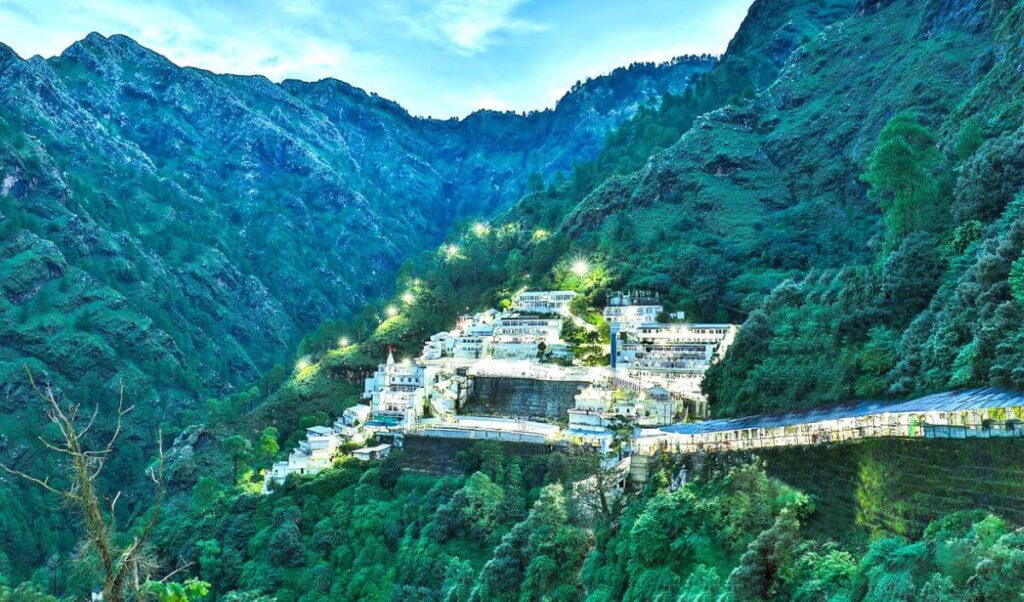
Tucked away in the serene folds of the Trikuta Mountains, the Vaishno Devi Temple is one of the most revered Hindu shrines in India. Located at an altitude of 5,200 feet above sea level, this sacred cave temple in Jammu & Kashmir draws over 1 crore (10 million) pilgrims each year, making it one of the most visited temples in the country.
Unlike typical temples with idols or statues, Vaishno Devi features three naturally formed rocks (Pindis) representing the divine energies of Goddess Kali, Lakshmi, and Saraswati. As one of the holiest Shaktipeeths, it is considered a powerful source of divine feminine energy.
Travel Info
- Location: Near Katra, Trikuta Mountains, Jammu and Kashmir, India
- Nearest Airport: Jammu Airport (approx. 50 km from Katra)
- Nearest Railway Station: Shri Mata Vaishno Devi Katra Railway Station
- By Road: Katra is well connected by road to Jammu (approx. 1.5 to 2 hours drive) and other major cities in North India
- Best Time to Visit: March to April – during Chaitra Navratri, September to October – during Sharad Navratri, October to March – for cool and pleasant weather
- Avoid July to September due to heavy monsoon rains which may affect trekking conditions
- Temple Timings: Open 24 hours, all year round (Yatra may pause during adverse weather)
Conclusion
India’s ancient temples are more than just marvels of stone and sculpture — they are timeless sanctuaries of faith, artistry, and cultural legacy. These sacred spaces speak of an era where devotion shaped architecture and stories were carved into walls that have stood for centuries. As you walk through their halls, it’s easy to feel the echoes of countless prayers, rituals, and moments of spiritual connection that still linger in the air.
FAQ About Ancient Temples of India
Some of the most iconic ancient temples include the Khajuraho Temples (Madhya Pradesh), Konark Sun Temple (Odisha), Meenakshi Amman Temple (Tamil Nadu), and Brihadeeswara Temple (Thanjavur, Tamil Nadu). Other notable sites include Kailasa Temple (Ellora) and Vaishno Devi Temple (Jammu & Kashmir).
The ideal time is from October to March, when the weather is cooler and more suitable for travel, especially in regions like South India, Rajasthan, and the Himalayan foothills.
Yes. Most temples require modest attire — clothing that covers shoulders and knees is recommended. Visitors must remove footwear before entering temple premises. In some temples, head coverings may also be advised.
Photography rules vary by temple. While you can usually take photos in the outer courtyards and architecture, photography is often prohibited inside the sanctum (garbhagriha). Always check local signs or ask temple staff.
Yes. Major temple sites are open to visitors of all nationalities. Many offer English-speaking guides, signage in multiple languages, and amenities for tourists. However, access to certain inner areas may be limited for non-Hindus at some temples.



